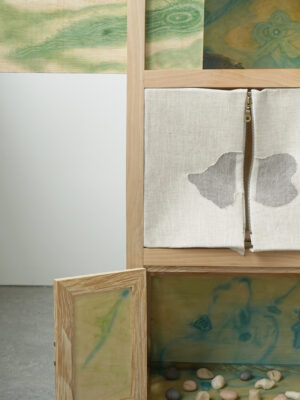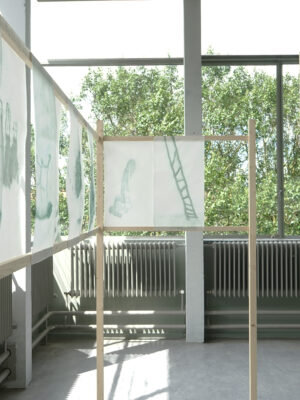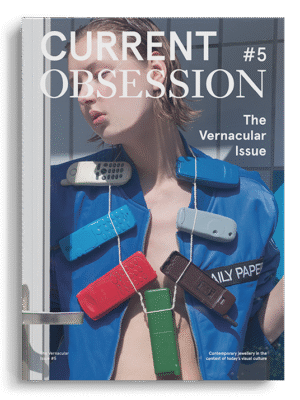pàn qi creates installations and performances for viewers to wander through, both bodily and imaginatively. By using poetic texts, paintings and drawings, meditative bodies, and subtle sounds, pàn contemplates how an individual intuitively perceives the self in relation to time, memory, and consciousness. The subdued undertone of the work invites the audience into a self-reflective space where they may present their own thoughts as a component of the work. Preferring fragile materials and mobile constructions, pàn seeks to internalise the undetermined, transient, and multiplicitous aspects of living into the process of making.
The graduation project Foxtail by the Pole consists of an installation capturing the transient flow of memory, with a performer meditatively making sounds and movements. This continues through performative wanderings where the artist walks with Āgata, the memory backpack, inviting passersby to engage in conversations to shape memories.



CO: What ideas or themes inspire your work?
PQ: Whenever I truly have time for myself, not subjugated to the rushing torrents of daily life, I sense my inner waves surge and submerge me. Then the past is right there, stretching me across the places and moments I’ve been. When was the last time I saw that oblong-pointy red moon? When was the last time I walked barefoot on a grassland? The past no longer has momentum in the immediate present, but it lives vividly and visits me often, even in dreams.
These precious moments are the major sources of inspiration for this work. I’m curious to see if I can create this ungraspable and hardly conveyable inner walk for others, to get away from the surroundings that fall on us out of inertia. I’m also attracted by the idea that two beings can conjoin each other’s inner waves. I guess in the end, I see us all as drops inside this ever-flowing time, touching each other, running into each other, becoming each other, and eventually passing away.


CO: What are the biggest challenges you face in your practice?
PQ: Through my practice, I try to open up, or at least create a slit in, this private and secretive inner realm of living, which comes to us as perceptions within the boundary of what we call our body. It is difficult to see how external materials can ever correspond to, if not distract us from, this inner realm. Even if I managed to show myself that I had brought forth what I experienced within, it would be another challenge to channel that to another person. The questions of how I can guide myself in and out of this contemplative state, and how I can have real conversations (which don’t have to be verbal) with others, have always been conundrums within and apart from my practice.
I’m happy that by making and experimenting with this work, such as creating the semi-transparent installation in which the visitor can roam with a sense of privacy and immersion, and incorporating the meditative performance, I was able to create for some visitors an absorbing moment where they could stay and let themselves be taken into it. The dialogues started with Āgata and the foxtail also gave me and passersby a string to hold onto in this inner journey.



CO: Could you describe your approach within the broader fine art field?
PQ: Moving through space, I experience time internally. This time is not the regulated clock time; it stretches and contracts, fills and nullifies. When I catch a glimpse of it—such as seeing it keep a grass green eternally or watching it put a life on rolling waves and then sweep it away—I want to preserve that glimpse through my work. This glimpse lasts longer than a second of contact, which is why I’d like to invite the visitor to become a part of this duration. When you are in time, there are no arbitrary segments. The work is also immediately present with you; sometimes a performer or the artist themselves is there too. So you won’t be standing still, but shifting with time in your own body and imagination, while I’m by your side.

Instagram @panqi.studio
All featured images are courtesy of the artist, photographed by Xuecheng Xu and Chen Yin.



